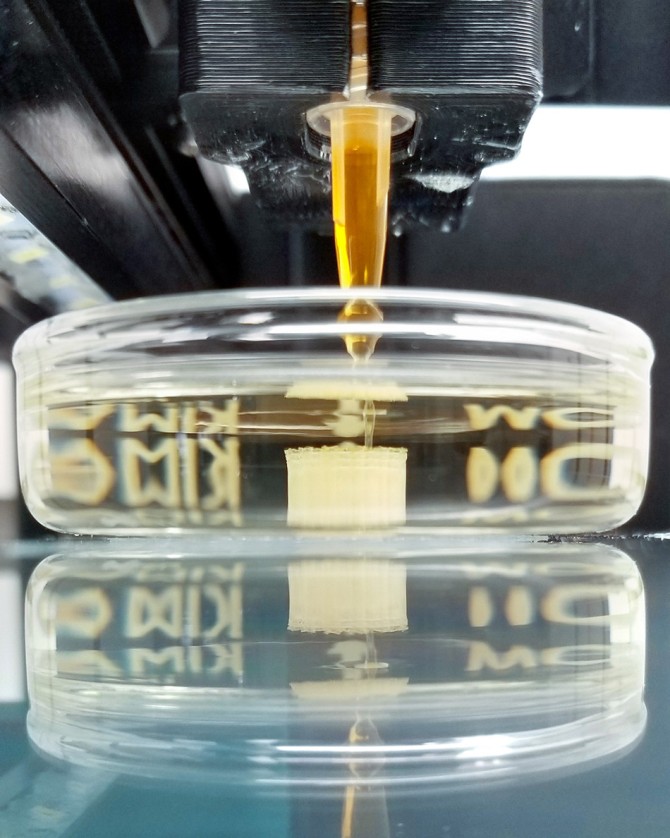
Nearly a decade after pioneering the use of soft materials to guide the formation of superconductors, researchers at Cornell University have achieved a significant breakthrough. They have developed a one-step, 3D printing method that produces superconductors with record-breaking properties. This advancement, detailed in the August 19 edition of Nature Communications, is the result of years of interdisciplinary research led by Ulrich Wiesner, the Spencer T. Olin Professor in the Department of Materials Science and Engineering at Cornell. The new method holds promise for enhancing technologies such as superconducting magnets and quantum devices.
The innovative process utilizes a copolymer-inorganic nanoparticle ink that self-assembles during the 3D printing process, subsequently transforming into a crystalline superconductor through heat treatment. This approach marks a significant departure from traditional methods of creating porous materials, which typically involve multiple steps, including synthesizing materials separately and re-processing them with binders and heat treatments.
Revolutionizing Superconductor Fabrication
Wiesner and his team first reported the self-assembly of superconductors using block copolymers—soft, chain-like molecules that naturally form orderly, repeating nanoscale structures—in 2016. By 2021, they demonstrated that these soft material approaches could yield superconducting properties comparable to conventional methods. The latest study builds on these findings by using a copolymer-inorganic nanoparticle ink that self-assembles during 3D printing, leading to a porous crystalline superconductor.
Cornell’s “one-pot” process simplifies the creation of superconducting materials by skipping several traditional steps, allowing for the production of structures at three scales: atomic, mesostructured, and macroscopic. This innovation enables the printing of complex shapes, such as coils or helices, which was previously unachievable.
Record-Breaking Performance
The study’s most notable achievement was the printing of a niobium-nitride material, which exhibited an upper critical magnetic field of 40 to 50 Tesla—an unprecedented value for this compound superconductor. This property is crucial for applications in strong superconducting magnets, such as those used in MRI imaging.
“We’ve mapped this superconducting property onto a macromolecular design parameter that goes into the synthesis of the material. That’s something no one has shown before,” Wiesner explained. “The map tells us which polymer molar mass is needed to achieve a specific superconductor performance, a remarkable correlation.”
Collaborative Efforts and Future Directions
This groundbreaking work was made possible by the contributions of graduate students Fei Yu, who developed and tested the printing inks, and Paxton Thetford, who solved the chemistry of working with unusually small block copolymers. Key contributions also came from Bruce van Dover, the Walter S. Carpenter Jr. Professor in the Department of Materials Science and Engineering, as well as Sol Gruner and Julia Thom-Levy from the Department of Physics in the College of Arts and Sciences.
Looking forward, the researchers aim to explore alternative superconducting compounds. The study suggests that the method can be applied to other transition metal compounds, such as titanium nitride, and to 3D structures that are challenging to achieve with conventional processes. The porous architecture also produces record surface areas for compound superconductors, which could be valuable for designing next-generation quantum materials.
“I’m very hopeful that as a new research direction, we’ll make it easier and easier to create superconductors with novel properties,” Wiesner said. “Cornell is unique in bringing together chemists, physicists, and materials scientists to push this field forward. This study demonstrates just how much potential there is in soft matter approaches to quantum materials.”
Support and Acknowledgments
The research was supported by the National Science Foundation and facilitated by the Cornell University Materials Research Science and Engineering Center. Additional support came from the FMB beamline at the Cornell High Energy Synchrotron Source, sponsored by the Air Force Research Laboratory.
As the field of superconductors continues to evolve, the implications of this research are vast. By simplifying the production process and achieving unprecedented performance levels, Cornell’s breakthrough could pave the way for new applications and innovations in various industries.







